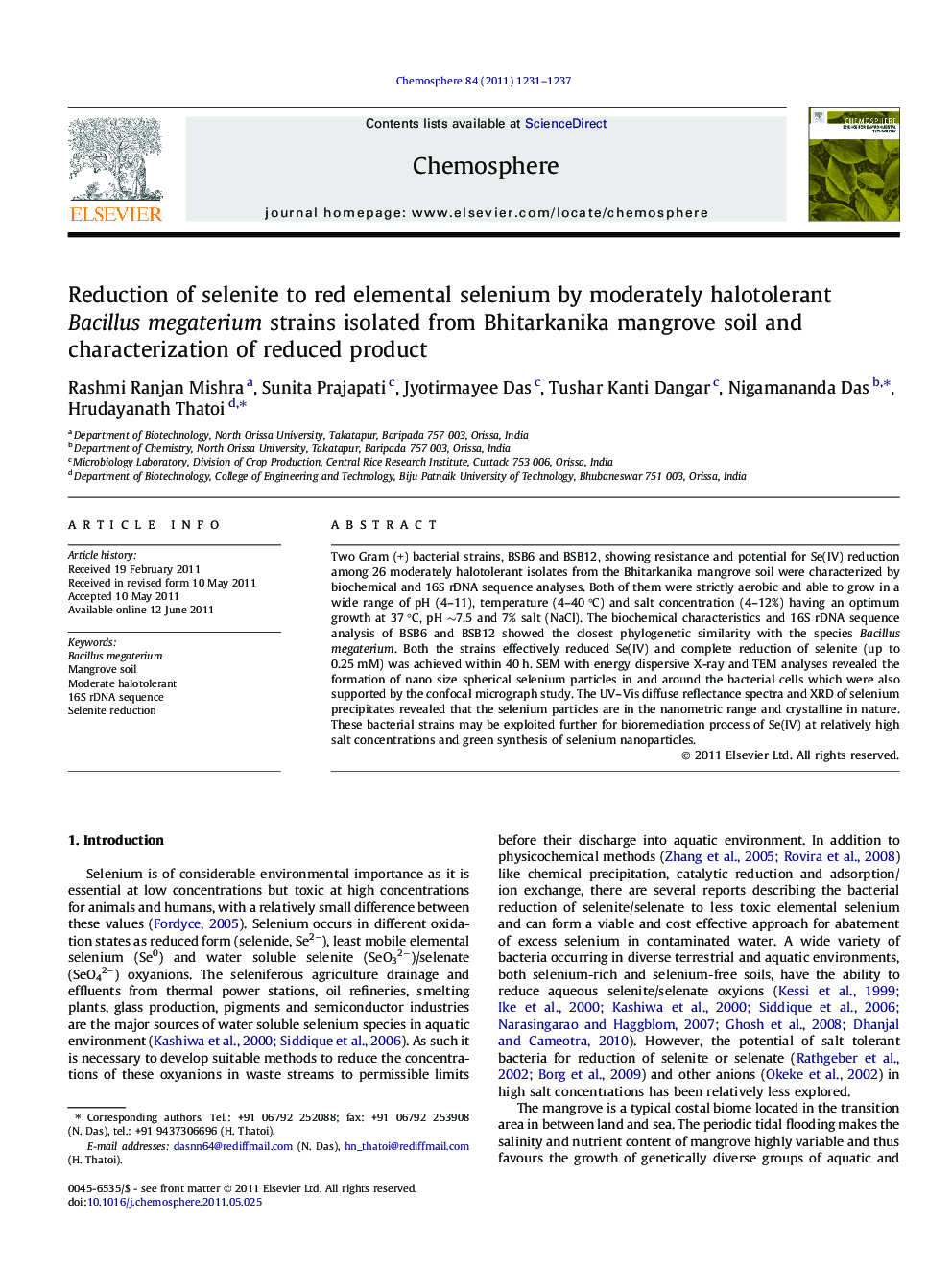| Article ID | Journal | Published Year | Pages | File Type |
|---|---|---|---|---|
| 4410822 | Chemosphere | 2011 | 7 Pages |
Two Gram (+) bacterial strains, BSB6 and BSB12, showing resistance and potential for Se(IV) reduction among 26 moderately halotolerant isolates from the Bhitarkanika mangrove soil were characterized by biochemical and 16S rDNA sequence analyses. Both of them were strictly aerobic and able to grow in a wide range of pH (4–11), temperature (4–40 °C) and salt concentration (4–12%) having an optimum growth at 37 °C, pH ∼7.5 and 7% salt (NaCl). The biochemical characteristics and 16S rDNA sequence analysis of BSB6 and BSB12 showed the closest phylogenetic similarity with the species Bacillus megaterium. Both the strains effectively reduced Se(IV) and complete reduction of selenite (up to 0.25 mM) was achieved within 40 h. SEM with energy dispersive X-ray and TEM analyses revealed the formation of nano size spherical selenium particles in and around the bacterial cells which were also supported by the confocal micrograph study. The UV–Vis diffuse reflectance spectra and XRD of selenium precipitates revealed that the selenium particles are in the nanometric range and crystalline in nature. These bacterial strains may be exploited further for bioremediation process of Se(IV) at relatively high salt concentrations and green synthesis of selenium nanoparticles.
► Isolation of moderately halotolerant Bacillus megaterium strains from mangrove soil. ► Efficient Se(IV) reduction to red elemental selenium in high salt concentrations. ► Salt concentration and pH are the most important parameter in the reduction process. ► Formation of crystalline selenium(0) in the nanometric range.
